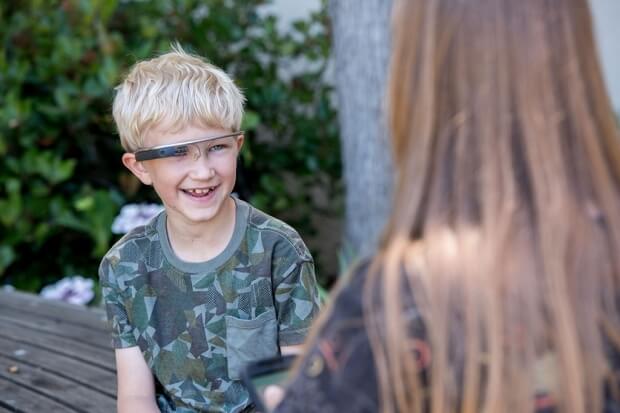Google Glass for autistic children
Google Glass Project designs a facial recognition software for kids suffering from autism to help them recognize expressions of people and thus enhance their social skills.
Currently, many children in the world are suffering from Autism which made their life difficult. Those suffering from this disorder encounter difficulty in communication. They are incapable to identify and read the facial expressions too. Many kinds of research have been made in the past to find a solution to this problem so that the life of such special children can be made easy. This is a disorder which stays forever and so there was an urgent need to find out better unfolding.
The Stanford University School of Medicine, California came up with an outstanding idea to help the kids suffering from Autism. The Google Glass is used to help children learn about facial expressions. They learn to read, respond and make eye contact after using a new smartphone application that pairs and runs efficiently on this super-amazing wearable.
The application gives prompts or indication about the expression of other people, to an autistic child. These prompts are purely real-time and the Google Glass helps the children to identify the expressions.
This application tells about the emotions of people through their expressions.
On August 2nd, to monitor the coordination of both the application and glass and to seek responses from autistic children, a trial was held. For more than 10 weeks, this trial program was used by 14 children at home. After the time over, 11 of the autistic kids showed great improvement not just in identifying the facial expressions but they were also able to make better eye contact. This program facilitated the children to enhance their social skills.
Those who suffer from autism are special children and to understand emotions and expressions, they require specific behavioural therapy. For them, it is sturdier to learn all this from their family or friends, like other children. A therapy is combined with a number of activities that also involved the practice to recognize the facial expressions.
At the Autism Glass Project, a team of scientists came up with the idea to build facial-recognition software for such children. The team is led by Dennis Wall and the objective of the team is to support autistic children to identify and differentiate among the expressions of all the eight types: happiness, sadness, disgust, anger, surprise, feat, calm, and contempt.
There is a camera on the headset of the Glass which records the faces and expressions. The smartphone application is also outstanding as it has an excellent capability to help in recognizing all the expressions.
The application works efficiently. It identifies expressions and sends signals to the wearer of the Google Glass. The information is sent through the speakers at the headset else by displaying the respective emoticon on a small screen at the corner of the Glass frame. The results of the use of Google Glass along with the smartphone application are great.
Children from the age of 3 to 17 years took benefits of this program and every week they attended the 20-minute sessions. The children were extremely responsive after the treatment.
The outcomes were pretty satisfying, but there are many enhancements required for a much better response from the kids. The Google Glass program was a hit and a huge reason behind the improvement of the social and communication skills of the autistic children.
Image credit: med.stanford.edu

















